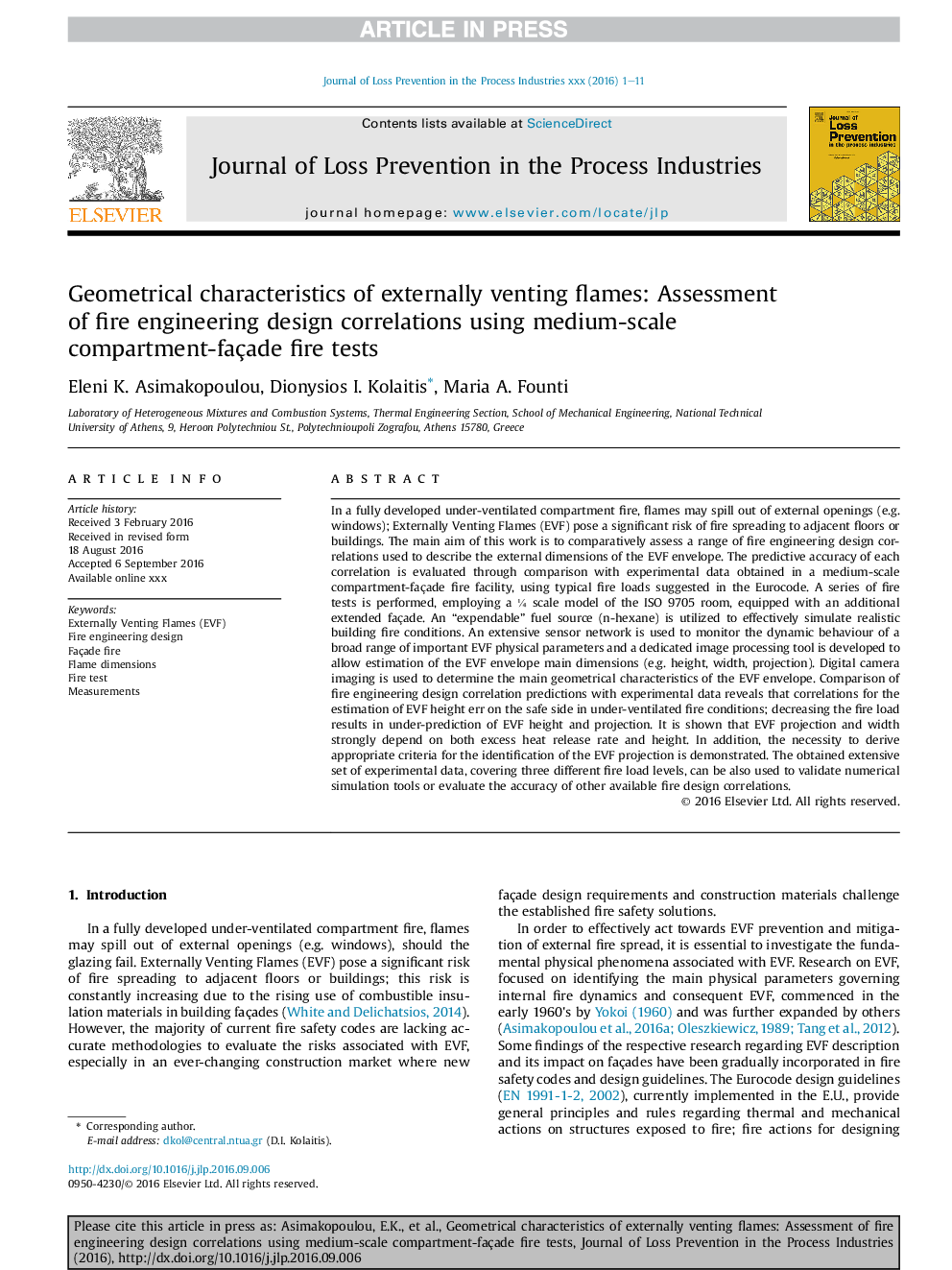| کد مقاله | کد نشریه | سال انتشار | مقاله انگلیسی | نسخه تمام متن |
|---|---|---|---|---|
| 4980429 | 1453264 | 2016 | 11 صفحه PDF | دانلود رایگان |
عنوان انگلیسی مقاله ISI
Geometrical characteristics of externally venting flames: Assessment of fire engineering design correlations using medium-scale compartment-façade fire tests
ترجمه فارسی عنوان
خصوصیات هندسی شعله های خروجی خارجی: ارزیابی ارتباطات طراحی مهندسی آتش با استفاده از آزمون های آتش سوزی محاسبه شده در مقیاس متوسط
دانلود مقاله + سفارش ترجمه
دانلود مقاله ISI انگلیسی
رایگان برای ایرانیان
موضوعات مرتبط
مهندسی و علوم پایه
مهندسی شیمی
بهداشت و امنیت شیمی
چکیده انگلیسی
In a fully developed under-ventilated compartment fire, flames may spill out of external openings (e.g. windows); Externally Venting Flames (EVF) pose a significant risk of fire spreading to adjacent floors or buildings. The main aim of this work is to comparatively assess a range of fire engineering design correlations used to describe the external dimensions of the EVF envelope. The predictive accuracy of each correlation is evaluated through comparison with experimental data obtained in a medium-scale compartment-façade fire facility, using typical fire loads suggested in the Eurocode. A series of fire tests is performed, employing a ¼ scale model of the ISO 9705 room, equipped with an additional extended façade. An “expendable” fuel source (n-hexane) is utilized to effectively simulate realistic building fire conditions. An extensive sensor network is used to monitor the dynamic behaviour of a broad range of important EVF physical parameters and a dedicated image processing tool is developed to allow estimation of the EVF envelope main dimensions (e.g. height, width, projection). Digital camera imaging is used to determine the main geometrical characteristics of the EVF envelope. Comparison of fire engineering design correlation predictions with experimental data reveals that correlations for the estimation of EVF height err on the safe side in under-ventilated fire conditions; decreasing the fire load results in under-prediction of EVF height and projection. It is shown that EVF projection and width strongly depend on both excess heat release rate and height. In addition, the necessity to derive appropriate criteria for the identification of the EVF projection is demonstrated. The obtained extensive set of experimental data, covering three different fire load levels, can be also used to validate numerical simulation tools or evaluate the accuracy of other available fire design correlations.
ناشر
Database: Elsevier - ScienceDirect (ساینس دایرکت)
Journal: Journal of Loss Prevention in the Process Industries - Volume 44, November 2016, Pages 780-790
Journal: Journal of Loss Prevention in the Process Industries - Volume 44, November 2016, Pages 780-790
نویسندگان
Eleni K. Asimakopoulou, Dionysios I. Kolaitis, Maria A. Founti,
